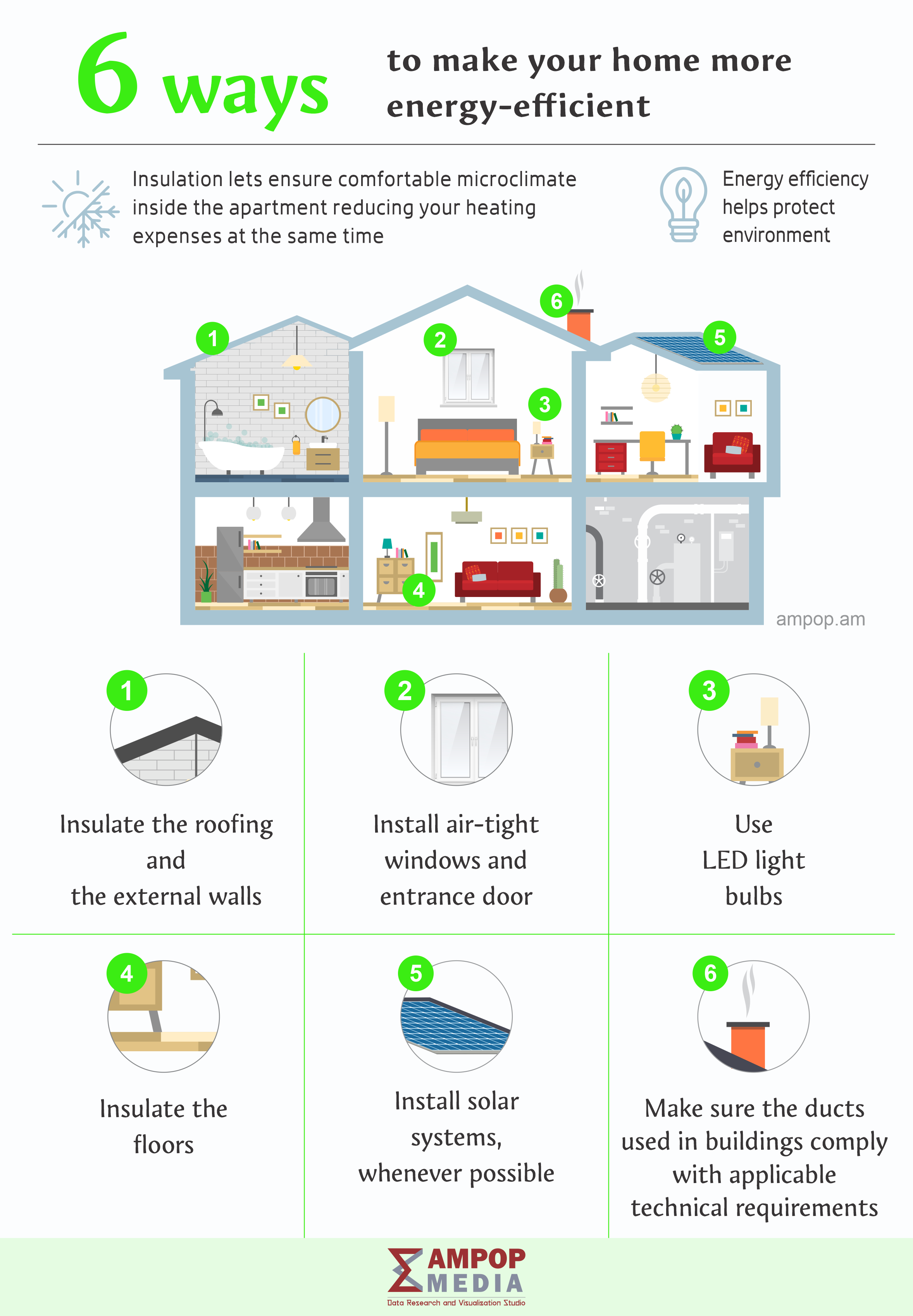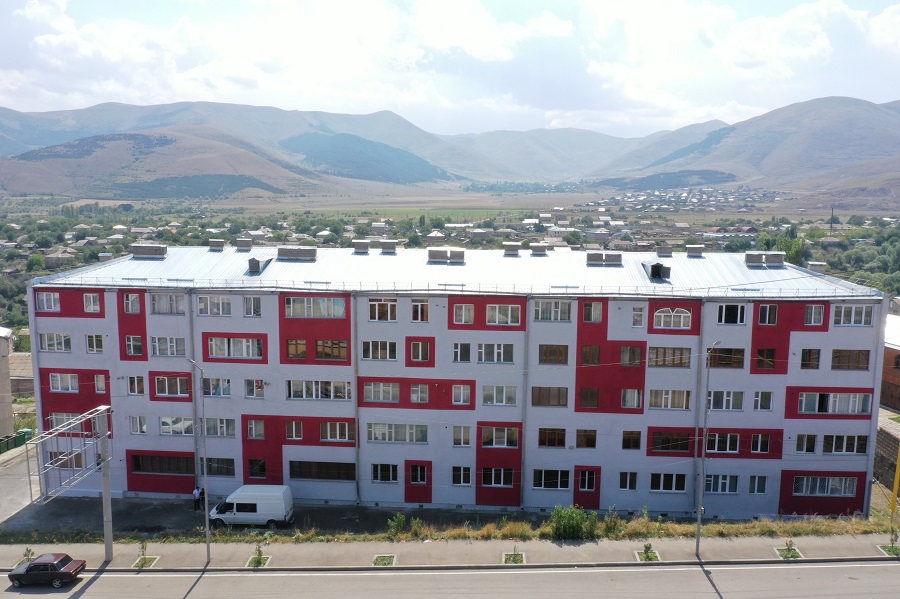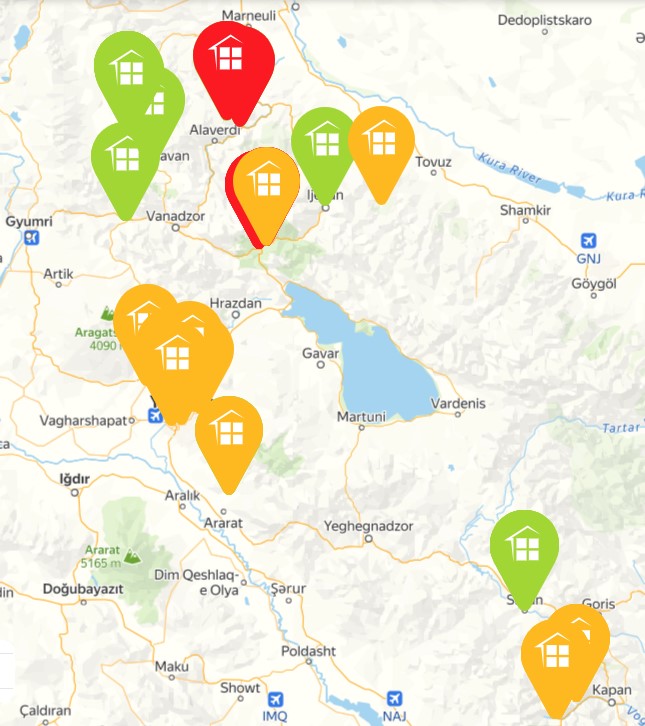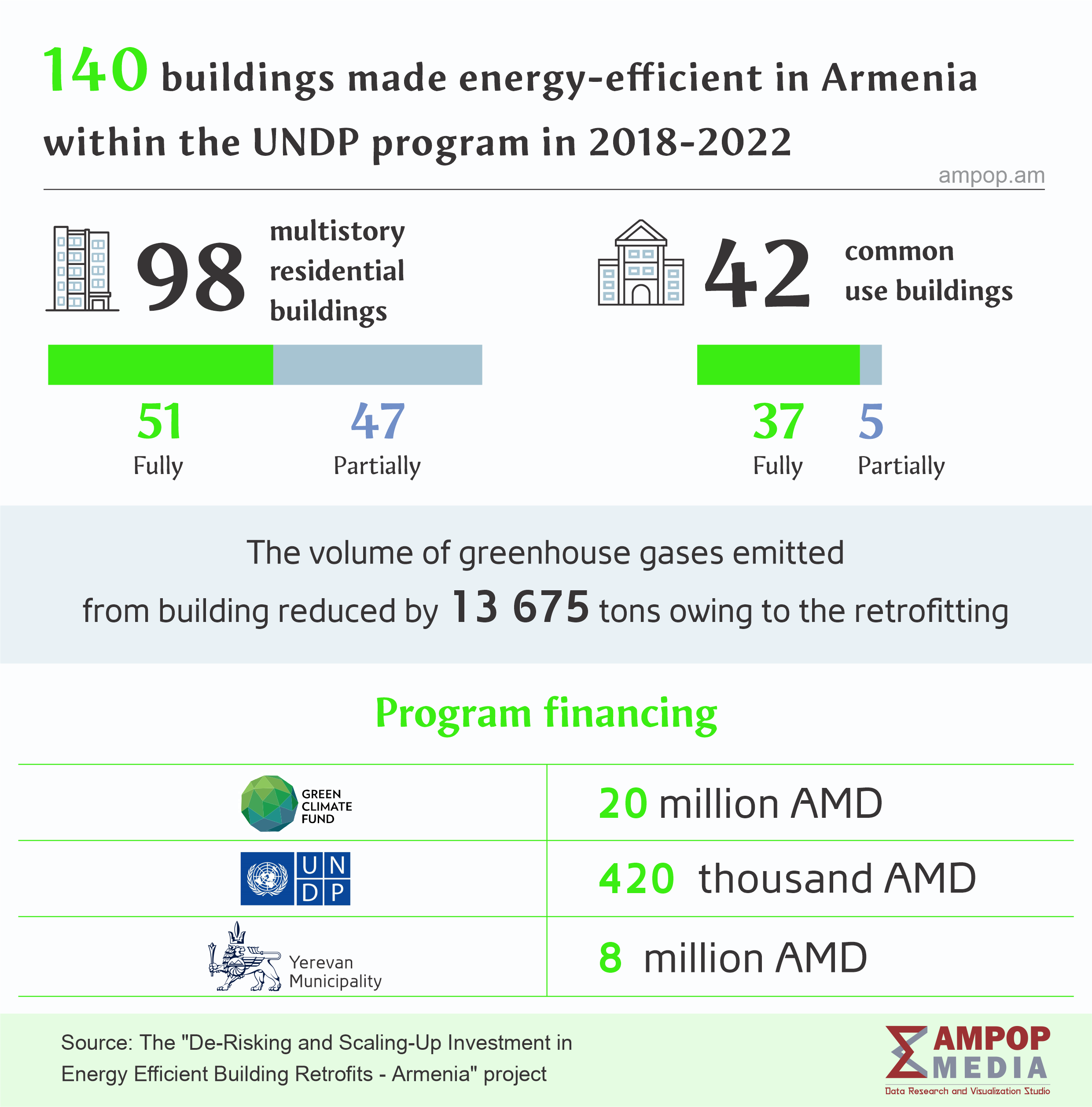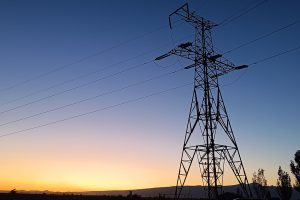Armenia’s greenhouse emissions rates may look harmless if compared to the data available for the heavily industrialized countries with developed machine industry, metallurgy, or chemical production.
The countries with major industrial capacities naturally have their dues to pay to the planet Earth. But does not mean Armenia shall not look for options to insulate buildings to ensure their energy-efficiency, or to generally take measures for the reduction of emissions into the atmosphere; specifically, this is because in fact Armenia’s index shows tendency to grow.
Carbon dioxide makes 66% of greenhouse emissions in Armenia, generated by the country’s energy sector, transportation, as well as the energy consumption by households and public buildings.
Read also. Alarming Rise in Carbon Dioxide Emissions from Energy Sector
Inga Zarafyan, chairwoman of the information non-governmental organization “EcoLur” says, there is a total neglect of the measures aimed at the reduction of emissions in energy sector.
“People seem to understand the need for recoverable energy sources and energy saving measures, but those concepts are not applied in practice. One can see people use wood from the forests, meaning depleting of own resources by simply using it as a fuel. Houses remain lacking proper insulation that might help keep the heat inside the houses,” the environmentalist says.
This is widely known as a global issue, so, it is sometimes hard for people to perceive the urge of taking proper measures on individual level. Zarafyan underlines that even from the narrowest perspective wasting energy means damage to our water resources and, so, our food safety.
The Lake Sevan, playing a dramatic part in Armenia’s ecosystem, is threatened by the global warming caused by the greenhouse emissions.
Those concerns have been at its core of the De-risking and Scaling-up Investment in Energy Efficient Building Retrofits program by the UNDP, financed by the GCF and implemented by the Ministry of Nature Protection of the Republic of Armenia.
In the period between 2018 and 2022, programs to increase energy efficiency of 140 buildings in various regions of Armenia have been co-financed; about 98 of those buildings are residential; the remaining 42 buildings are used for public purposes.
Program coordinator Vahram Jalalyan shares the way the program helps ensure energy efficiency with Ampop Media. According to Jalalyan, the buildings are insulated and the heat remains captured inside the apartments for longer period of time, which leads to less consumptions of fuel, which in turn means less greenhouse emissions from residential buildings and less expenses on heating for residents.
Currently, there are only few energy-efficient or insulated buildings in Armenia and are easily noticed owing to their remarkable exterior. Those buildings, energy audit expert Artur Tsughunyan says, are given a passport, which provides information on the structure’s thermo-technical, geometrical and energy parameters.
“The passport includes information on the building’s size, heated area, heating volume, thermo-technical and energy parameters of its walls. The data is provided in a 9-part table, which required complex calculations before it could be prepared,” Tsughunyan says.
The expert says the efficiency of such buildings is measured against the energy consumption volumes per unit of area before and after the retrofit.
The exterior of a building in Spitak before and after the modernization
The pilot retrofitting program for multistoried residential buildings was launched about 10 years ago with one of the buildings in Yerevan’s Avan community. The single entrance, 9-storied building with 36 apartments had been monitored for 3 years in total before and after the modernization. The monitoring showed that following the retrofit residents can save 58% of the expenses on heating they had before, which is a predicted saving.
“Residents are given a tool to save. Will they use it or not, depends on the way they deal with the issue. People will be happy to have saved owing to the insulation, but if they decide the next day to turn the heating on 25C to have some extra comfort, rather than keep it on 20C, the savings will be gone. And one cannot exclude consumption hikes compared to the rates before the insulation was in place. We ensure a 100 percent comfort for people, which makes saving possible with a heating at 20 C,” Jalalyan says.
Jalalyan underlines, though, people tend to opt for the comfort, and, so, the envisioned saving rate in the case of the retrofit program is implemented, will be 40 to 45 percent.
Who pays for the modernization?
The negotiations between the UN Development Program and the Ministry of Territorial Administration and Infrastructures have made it possible to partially cover the insulation program by state subventions.
“Subvention programs mostly cover buildings, facilities and infrastructures on the state balance; that refers to buildings such as kindergartens and schools, which require renovations, asphalting, water supply pipelining and more. Residential buildings are not included in the list. But we reached an agreement with the state, because the retrofit would eventually improve the overall look of the community, and increase the buildings expected lifespan,” Jalalyan shares.
Assumed the community and the state each ensure 50 percent coverage through subvention programs (the proportion may vary due to a number of circumstances), the share of the state increases by 5 percent in the case of insulation program. In the case of partial insulation, the share will rise for another 5 percent. That means that 40 percent of the expected expenses are covered by the community, and the remaining 60 percent comes from the national budget.
Besides, the communities are free to engage third parties for co-financing. Those may be individuals or organizations willing to invest in the program. In the case the investment exceeds 20 percent, the state covers the 65 percent, and the community provides only 15 percent of the program’s budget.
The map of retrofitted energy efficient buildings in Armenia
“This year’s changes in subvention programs have imposed some part of financial participation on the residents. In the case of a full-scale insulation of the building, its residents are expected to ensure 5 percent of the needed amount; in the case of partial insulation, their share is expected to reach 10 percent,” says the program coordinator.
In the case of a partial retrofit only the roofing of the building is insulated; the works also include repair of staircases, doors and windows, without, however, renovating the walls of the building. However, the coordinator of the program underlines the importance of a full retrofit, despite its higher costs: “We encourage that,” he says.
The total budget spent to increase the energy efficiency of the 140 buildings has made 22.2 billion AMD, of which 1.6 billion AMD or the 7 percent have been covered by the program.
The program is expected to be extended for another 36 months.
By Arusyak Kapukchyan, Suren Deheryan
Infographics by: Anush Baghdasaryan
Photo credit: Mershenq.am
This article has been written in the framework of the “Access to Energy” project in cooperation with the Friedrich Ebert-Stiftung (FES).
Other articles in this series: #EnergySecurity
© All the stories, infographics and other visuals bearing the Ampop Media logo is possible to publish on other audiovisual platforms only in case of an agreement reached with Ampop Media and/or JFF.
Փորձագետի կարծիք
First Published: 22/06/2023



